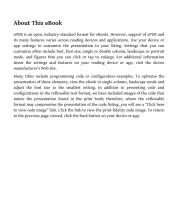EIGRP - EIGRP Configuration Modes
8 important questions on EIGRP - EIGRP Configuration Modes
What are the major differences between EIGRP Classic Configuration Mode and Named Mode?
In Named mode a EIGRP process is configured, then an EIGRP Instance is configured. Under the instance settings are configured either directly like the Network command or under the Interface and Topology submodes.
How is the EIGRP Router ID configured?
Otherwise statically with the command: eigrp router-id 32bit number
Command is the same for both Classic Configuration and Named mode.
EIGRP has two possible Metric sets, which is used when?
EIGRP Wide metrics are used in EIGRP Named Mode
- Higher grades + faster learning
- Never study anything twice
- 100% sure, 100% understanding
In EIGRP Timers do not have to match, but what is important about this when forming adjacencies?
What are the 5 steps top configure EIGRP Authentication?
- Create keychain using command: Key Chain keychainname
- Identify key number: Key key-number
- Specify PSK: Key-String password
- Configure keychain on interface:
IP Authentication Key-Chain EIGRP as-number keychainname - Configure authentication mode on interface:
IP Authentication Mode EIGRP as-number MD5
EIGRP Wide metrics are backwards compatible with EIGRP Classic metrics. What needs to be the case for adjacency to form between two routers using the different metrics?
What is the default maximum routes for EIGRP ECMP? And how can this be changed?
Can be changed using command: Maximum-paths number
Under EIGRP process in classic mode and under topology base submode in named mode.
When does a router sends a Stuck in Active query? And when does it declare the neighbor Stuck in Active?
If it doesn't respond within another 90 seconds the Active timer expires and the neighbor is deemed Stuck in Active and all routes for that neighbor are removed.
The question on the page originate from the summary of the following study material:
- A unique study and practice tool
- Never study anything twice again
- Get the grades you hope for
- 100% sure, 100% understanding































